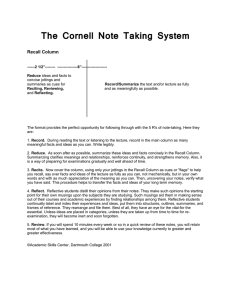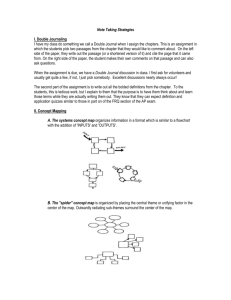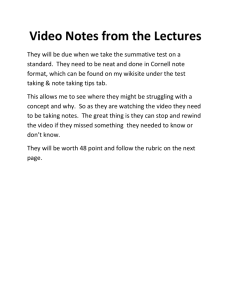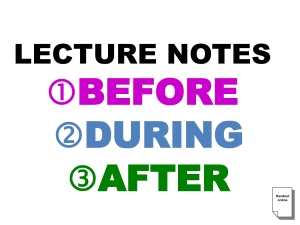NOTE TAKING - Dawson College
advertisement
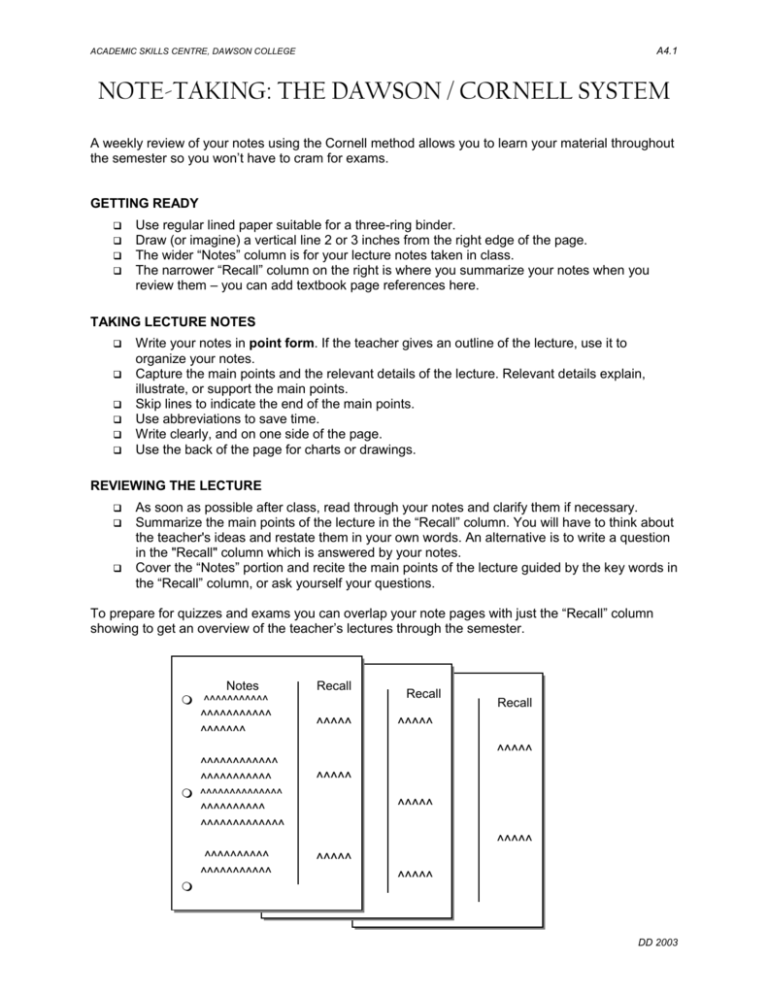
A4.1 ACADEMIC SKILLS CENTRE, DAWSON COLLEGE NOTE-TAKING: THE DAWSON / CORNELL SYSTEM A weekly review of your notes using the Cornell method allows you to learn your material throughout the semester so you won’t have to cram for exams. GETTING READY Use regular lined paper suitable for a three-ring binder. Draw (or imagine) a vertical line 2 or 3 inches from the right edge of the page. The wider “Notes” column is for your lecture notes taken in class. The narrower “Recall” column on the right is where you summarize your notes when you review them – you can add textbook page references here. TAKING LECTURE NOTES Write your notes in point form. If the teacher gives an outline of the lecture, use it to organize your notes. Capture the main points and the relevant details of the lecture. Relevant details explain, illustrate, or support the main points. Skip lines to indicate the end of the main points. Use abbreviations to save time. Write clearly, and on one side of the page. Use the back of the page for charts or drawings. REVIEWING THE LECTURE As soon as possible after class, read through your notes and clarify them if necessary. Summarize the main points of the lecture in the “Recall” column. You will have to think about the teacher's ideas and restate them in your own words. An alternative is to write a question in the "Recall" column which is answered by your notes. Cover the “Notes” portion and recite the main points of the lecture guided by the key words in the “Recall” column, or ask yourself your questions. To prepare for quizzes and exams you can overlap your note pages with just the “Recall” column showing to get an overview of the teacher’s lectures through the semester. Notes ^^^^^^^^^^^ Recall Notes ^^^^^^^^^^^ ^^^^^^^ ^^^^^^^^^^^^ ^^^^^^^^^^^ ^^^^^ Recall Notes Recall ^^^^^ ^^^^^ ^^^^^ ^^^^^^^^^^^^^^ ^^^^^^^^^^ ^^^^^^^^^^^^^ ^^^^^ ^^^^^ ^^^^^^^^^^ ^^^^^^^^^^^ ^^^^^ ^^^^^ DD 2003
